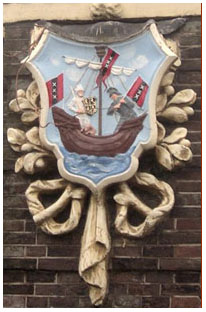
19th-century volley guns

A few hand-held volley guns were also developed during the 18th and 19th centuries. One of the most distinctive was the “duck’s-foot” volley gun, a pistol with four .45 calibre barrels arranged in a splayed pattern, so that the firer could spray a sizable area with a single shot.
The principle behind this type of pistol is one of confrontation by one person against a group; hence, it was popular among bank guards, prison warders and sea captains in the 1800s and early 1900s. The British Royal Navy used gunsmith Henry Nock of London’s volley gun around the time of the Napoleonic Wars.
































